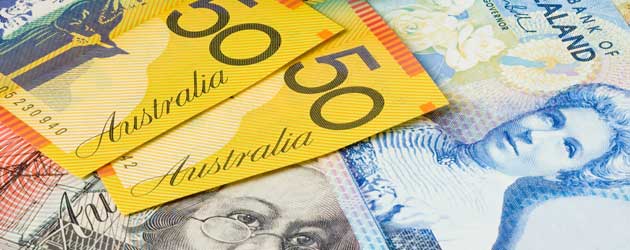The Pound Sterling (GBP) exchange rate advanced against the Australian Dollar (AUD) and New Zealand Dollar (NZD) on Monday. The gains come as a report showed that UK business costs fell for the first time in six months and as the Bank of England’s monetary policy diverges from its peers.
The Pound Sterling to Australian Dollar (GBP/AUD) exchange rate hit a session high 1.9597
Sterling continued to receive support from data released last week, which suggested that the UK economy began 2015 strongly. Economists are widely forecasting that the Bank of England’s next interest rate move will a be an increase, a stark comparison to the interest rate movements expected to be taken in Australia and New Zealand. The diverging trends of monetary policy between the BoE and many of its counterparts from elsewhere are set to keep the Pound higher against its peers.
Also supporting the Pound on Monday was the release of a report, which showed that business costs fell in February for the first time in six years. According to the data released by the accountancy and services group BDO, its inflation index fell into deflation territory, suggesting that business will be able to invest more in growth.
BDO’s inflation index fell below 95 to 94.7, the dividing line that denotes deflation. The decline was mainly down to the fall in oil prices. The fall is good news for UK businesses as dropping energy prices frees up cash for greater investment and expansion.
The report also showed that the UK economy is forecast to continue to expand over the course of the year as the BDO Output Index rose from a reading of 102.9 to 103.1. A figure above 100 indicates expansion.
‘British business is well placed to take advantage of falling costs, to help them bed in growth. Lower input prices will help entrench the recovery, as consumers gain more spending power. However, the UK economy still has substantial spare capacity. Spending on infrastructure is one of the most effective ways to push the economy back toward full employment and keep the recovery on track. Government debt is cheaper than it has ever been, and now, with falling raw material costs there is a fantastic opportunity for increased public sector investment. As we head towards the Budget, the Chancellor needs to do more to capitalise on this for the benefit of all of us,’ said Peter Hemington from BDO.
The Australian Dollar and New Zealand Dollar are forecast to remain under pressure against Sterling.
The New Zealand Dollar is weaker as traders questioned whether the Reserve Bank’s steps to lean on lending to speculative property investors would warrant a harder stance when the bank reviews interest rates on Thursday.
The ‘Aussie’ is weaker as economists continue to bet that the RBA will cut interest rates next month.

